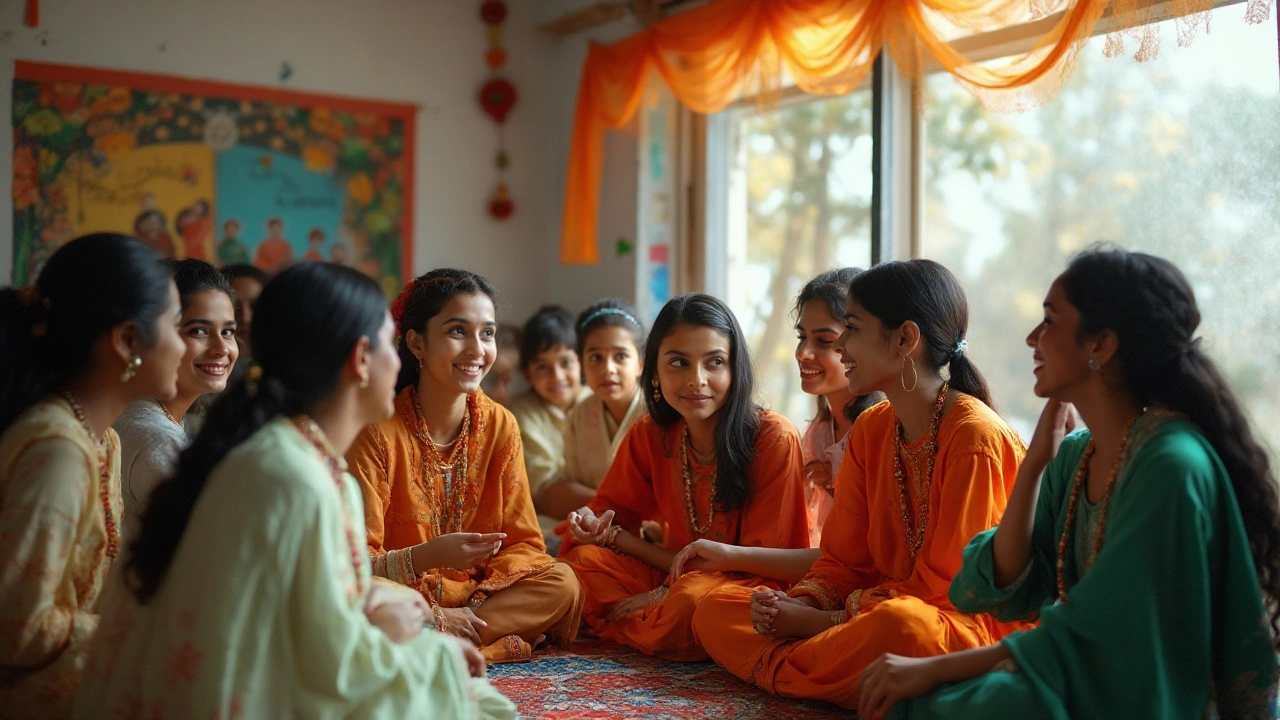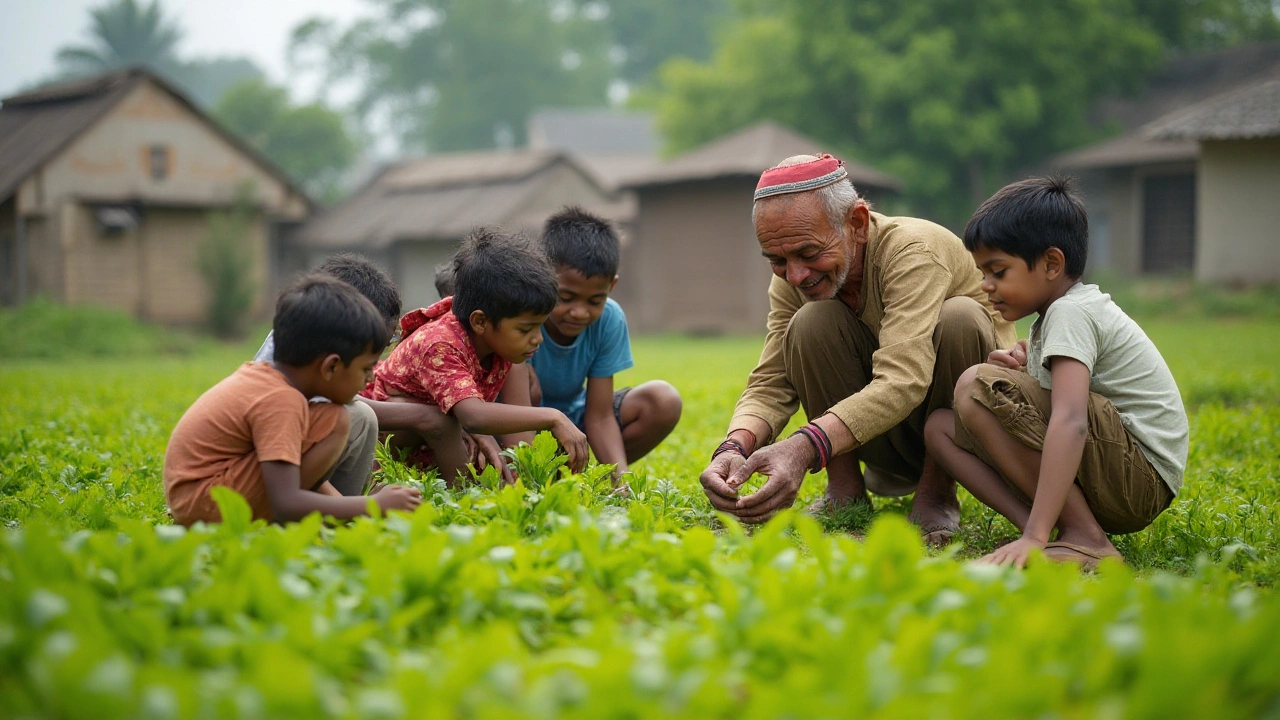
- Created by: Lydia Carmichael
- Completed on: 14 Jan 2025
- Categories: Youth Programs
Traditional youth organizations have been an integral part of community life for as long as we can remember. These groups provide young people with the opportunity to build skills, make lifelong friendships, and contribute positively to society.
The foundation of such organizations often lies in developing leadership abilities, promoting teamwork, and instilling core values that guide youth throughout their lives. By joining a traditional youth organization, individuals are not just engaging in activities; they are immersing themselves in a nurturing environment that encourages growth and development.
As we dive into the fascinating world of youth groups, let's consider how these organizations have maintained their influence over decades and continue to inspire new generations today.
- Historical Overview of Youth Organizations
- Scouting Organizations
- Cultural and Community Groups
- Impact on Youth Development
- Adapting to Modern Times
Historical Overview of Youth Organizations
Since their inception, youth organizations have served as a venerated cornerstone for developing the younger generation, influencing societal norms, and fostering a spirit of community service. The early instances of such organizations can be traced back to the 19th century, when industrialization was rapidly transforming societies across the globe. This era saw a burgeoning need for structured activities that could keep young minds engaged positively, especially as urban youth found themselves with more free time due to changes in child labor laws.
One of the most notable early examples is the Boy Scouts, founded by Robert Baden-Powell in 1907. The organization's mission was simple yet profound—prepare the youth for life's challenges through outdoor activities, skill-building exercises, and community service. Quickly spreading from its British origins, the Boy Scouts laid the groundwork for similar initiatives worldwide. According to an article from The New York Times published in 1910, “The training of boys in Scouting methods promises to teach self-reliance, resourcefulness, and a sense of public duty.”
During the same period, similar trends were emerging in the United States with organizations like the YMCA and the 4-H Clubs, which aimed to promote youth development in urban and rural environments, respectively. The YMCA, established in 1844, initially focused on creating healthy social spaces for young men, highlighting the importance of sound body and mind. Meanwhile, the 4-H Clubs, which began in the early 1900s, represented a shift toward agricultural education, teaching young participants practical skills through a “learn by doing” approach, thus making a marked impression on rural communities.
As time progressed, traditional youth groups saw an expansion in their scope and mission. Programs began catering to broader demographics, including girls, acknowledging the shifting societal perceptions on gender roles. This era saw a rise in organizations like the Girl Scouts, founded by Juliette Gordon Low in 1912, which sought to empower girls by equipping them with necessary skills and advocating for active involvement in the community.
The mid-20th century witnessed these youth programs adapting once again, addressing new societal challenges that arose in the post-war era. Organizations expanded their purview to include topics like racial equality, environmental stewardship, and youth activism, reflecting the changing priorities of the times. It was during this period that youth organizations strengthened their role as incubators for future leaders, fostering an aware generation capable of enacting meaningful change.
Despite changes in focus and structure over the decades, the essential mission of these venerable institutions has remained steady. They aim to imbue young individuals with strength of character, instill an appreciation for community, and prepare them for the various challenges they will encounter as they mature. As we look back on the history of community impact through these organizations, it becomes evident that their enduring legacy is built on adaptability, inclusivity, and the unwavering commitment to youth development.
Scouting Organizations
Scouting organizations have long been pillars of youth development across the globe. Founded in the early 20th century, they were conceived as a way to prepare young people to take on challenges with courage and integrity. One of the most renowned scouting organizations is the Boy Scouts of America, established in 1910 and inspired by the work of Robert Baden-Powell in the United Kingdom. His book, "Scouting for Boys," became a foundational text, emphasizing skills like camping, hiking, and knot-tying. Today, scouting organizations have a broad reach, influencing millions of young minds in over 150 countries.
A fundamental aspect of scouting is its structured badge system, which encourages scouts to master practical skills while earning tokens of achievement. From first aid and environmental conservation to leadership and community service, the badges motivate scouts to explore diverse areas and reach personal growth. As they move through the ranks, from Cub Scouts to Eagle Scouts, individuals enhance not only their abilities but also instill a sense of responsibility toward their communities.
“The spirit is there in every boy; it has to be discovered and brought to light.” —Robert Baden-Powell
Scouting organizations foster inclusivity and teamwork by encouraging young people from various backgrounds to work together towards common goals. Activities such as campouts, community service projects, and leadership training sessions help cultivate a deeper understanding of the importance of diversity both within the troop and in broader society. In 1972, scouting saw a shift with the introduction of co-educational options, rejuvenating the organization and expanding its reach by welcoming girls and young women into its programs.
Moreover, in recent years, many scouting organizations have embraced technology, adapting programs to include new areas of interest like computer science and robotics. This adaptability allows them to stay relevant in a rapidly changing world while still holding firm to their traditions and values. For instance, the Boy Scouts of America launched the 'STEM Scouts' program, designed to spark interest in science, technology, engineering, and math through hands-on experience and teaching.
The impact of scouting on youth development cannot be overstated. Research from Tufts University highlights that scouts score higher on optimism and prosocial behavior compared to their non-scout peers. According to their findings, these young individuals are also more likely to exhibit resilience, work well with others, and lead with empathy — valuable life skills that benefit them in adulthood.
The legacy of scouting endures because of its commitment to developing well-rounded individuals. Whether learning the skills necessary to tie a perfect knot or organizing a community clean-up, scouting instills valuable life lessons that extend far beyond the confines of the badge sash. This adaptability combined with a strong foundation of core values makes scouting organizations a beacon of positive youth development in every corner of the globe.

Cultural and Community Groups
Cultural and community groups form the bedrock of social engagement for young people across the globe. By participating in these organizations, youths gain a unique insight into their cultural heritage, traditions, and collective community responsibilities. These groups often extend beyond recreation, focusing on preserving cultural identities and embracing the diversity that exists in our global world. For example, the YMCA, founded in 1844, is as much a cultural staple as it is a community support network. It boasts millions of members worldwide and plays a pivotal role in supporting youth development through various programs tailored to diverse communities.
A prime example of such organizations can be seen in groups like the Indian Youth Club and various community youth centers that cater to immigrant communities in major cities. These organizations provide vital platforms where young individuals can celebrate and learn about their cultural backgrounds. As the famed anthropologist Margaret Mead once said,
"Children must be taught how to think, not what to think."Through cultural and community groups, youth are encouraged to critically engage with their heritage, appreciate different perspectives, and foster open-mindedness.
These organizations often offer facilities like language classes, traditional dance workshops, and cultural festivals. Members adopt pivotal roles in organizing events, participating in decision-making processes, and promoting inclusivity. Participation doesn't just enhance personal growth; it significantly impacts the wider community as well. Youth groups often collaborate on community service projects, extending their impact beyond just their members. For instance, during festive seasons, these groups may coordinate efforts to provide meals and donations to underprivileged families, reinforcing the concept of community solidarity.
An interesting development among cultural youth organizations is their adaptability to modern changes without losing their cultural essence. With technological advancements, many of these groups now offer virtual meet-ups and online workshops. This adaptability enhances their reach and reaffirms their relevance in today's digital age. A significant aspect of their operation is inclusivity, ensuring that every young person feels welcomed and valued, regardless of their background, which enhances social cohesion. Data from community studies reveals that areas with active youth organizations report higher rates of youth engagement in civic activities and lower instances of anti-social behavior, underscoring the long-term benefits of these cultural and community-based initiatives.
The evolution of these organizations is remarkable. Young leaders often emerge from these groups, equipped with skills in leadership, cultural competence, and ethical decision-making. Such development aligns perfectly with the key goals of traditional youth organizations, leaving a lasting imprint that goes beyond the individual, benefiting society as a whole.
Impact on Youth Development
The role of traditional youth organizations in shaping the personal and social growth of young individuals cannot be understated. For generations, these groups have been the bedrock of nurturing leadership qualities and fostering community spirit among the youth. When young people engage with such organizations, they often undergo a transformative experience, evolving into well-rounded individuals. These clubs provide a platform for children and teenagers to learn valuable life skills such as discipline, perseverance, and empathy. Through regular activities and meetings, members are encouraged to step out of their comfort zones, take on leadership roles, and make decisions that affect others. It's in these moments that the seeds of responsibility are sown.
Educational scholars have often emphasized the profound impact these groups can have. According to a report by the Journal of Youth Development, individuals who participate in structured youth groups are more likely to excel academically and socially compared to their peers who do not. This suggests a direct correlation between youth group involvement and the overall well-being and success of the participants. A key benefit of these organizations is the opportunity they offer to interact with a diverse group of peers and adults who serve as mentors. The wisdom and guidance from experienced leaders helps in molding the character of the youth, offering them a judicious mix of support and challenge.
Moreover, many traditional youth groups integrate programs that focus on skill-building in areas such as communication, negotiation, and collaboration. These competencies are critical in the modern world, where teamwork and adaptability are prized. Whether it's learning to work through disagreements in a scout meeting or coordinating efforts in a community clean-up drive, members practice and refine skills that will benefit them lifelong. The presence of these supportive and constructive environments alleviates any developmental pressures a youngster might face, as they know they are surrounded by like-minded individuals who share common goals and values.
Social and Emotional Development
Another significant aspect is the emotional resilience that young individuals develop through these groups. Engaging in these activities often helps them manage stress and build a positive self-image. With the advent of technology and social media, today's youth face different challenges that can impact their mental health adversely. However, the camaraderie, support, and real-life connections formed within these communities offer a protective buffer. For example, a research study from Stanford University highlights how consistent involvement in youth organizations leads to a decreased likelihood of depression and anxiety in adolescents.
Let's not forget the sense of empowerment that young people feel when they see the tangible impact of their contributions. Completing a service project or organizing a successful event instills a sense of pride and accomplishment. These milestones are more than just achievements; they are affirmations of their capabilities and potential. Additionally, these opportunities for voluntary service instill a habit of giving back to the community, creating a ripple effect that goes beyond the organization and touches lives on a broader scale.
"Youth organizations build the mindset and life skills that our future leaders need. They are vital to personal growth and community-building." - Dr. Henry Nichols, sociologist and author.
Indeed, traditional youth organizations serve as crucial architects of a young person's developmental journey. By providing a nurturing yet challenging environment, these groups enable children and teenagers to harness their potential, laying down strong foundations for a successful future. They are the harbingers of positive change, ensuring that the young have the tools they need to navigate the complexities of adulthood with confidence and purpose.

Adapting to Modern Times
In today's rapidly changing world, traditional youth organizations have found themselves at a critical crossroads. To remain relevant, they must embrace the challenges and opportunities posed by the digital age. This adaptation process is not merely about survival, but about thriving in an environment where young people are more connected yet more distant than ever before. Many youth programs now harness technology as a tool for engagement, creating online platforms that complement their face-to-face activities. These digital extensions allow for broader reach and inclusivity, ensuring that no matter where a young person lives, they can participate and benefit from what youth organizations offer in terms of personal and communal growth.
One of the most significant shifts has been the integration of social media. Traditional organizations like the Boy Scouts and Girl Guides have created social media campaigns to maintain visibility and engage both members and the wider community. By sharing stories, successes, and activities online, these groups remain in public consciousness and inspire new memberships. Moreover, many have developed mobile apps that provide easier access to resources, event schedules, and community forums. This move toward tech-savvy solutions indicates a significant shift from the often paper-heavy methods of the past.
Another adaptation involves rethinking the content of their programs. Today's youth are deeply concerned about global issues like climate change, social justice, and mental health. Understanding this, many traditional youth organizations have revisited their core activities and updated them to include these relevant topics. They now offer workshops and projects that address these concerns, empowering young individuals to become advocates and change-makers in their communities. Sir Robert Baden-Powell, the founder of the Scouting movement, famously said,
Try to leave this world a little better than you found it.This ethos continues to resonate deeply, driving such organizations to evolve in ways that align with the values of newer generations.
Furthermore, the adaptation extends beyond mere activities to the very structure of these organizations. Many have adopted more inclusive policies, welcoming diverse members from different backgrounds. This commitment to diversity and inclusion signals a willingness to reflect societal changes and support equality. By providing safe spaces where young people can learn about different cultures and lifestyles, youth groups are creating environments that foster understanding and empathy. Through partnerships with schools and communities, they ensure that every young person has an opportunity to grow without barriers.
Such adaptations have also led to collaborations with other organizations. By forming alliances with environmentally focused groups, social advocacy organizations, and mental health institutions, traditional youth organizations can offer enriching experiences that are both educational and supportive. These collaborations extend their impact, providing youths with a wider array of resources to address their interests and concerns.
In the realm of community impact, the continual evolution and adaptation of traditional youth organizations serve as a testament to their vibrant legacy. As society progresses, and issues evolve, these organizations remain steadfast pillars, guiding young people to become proactive, empathetic leaders ready to address the world’s looming challenges.